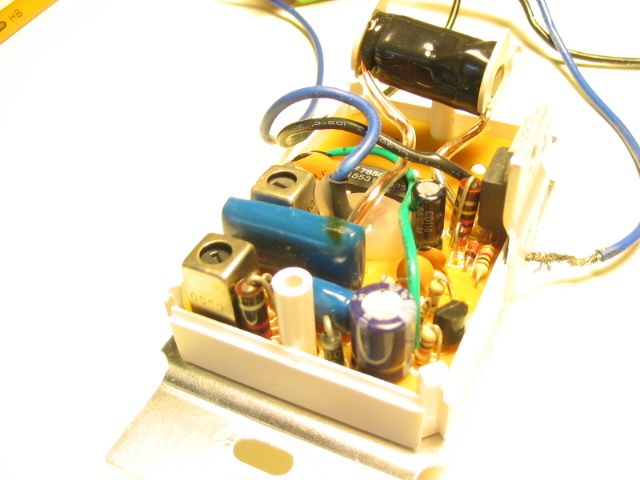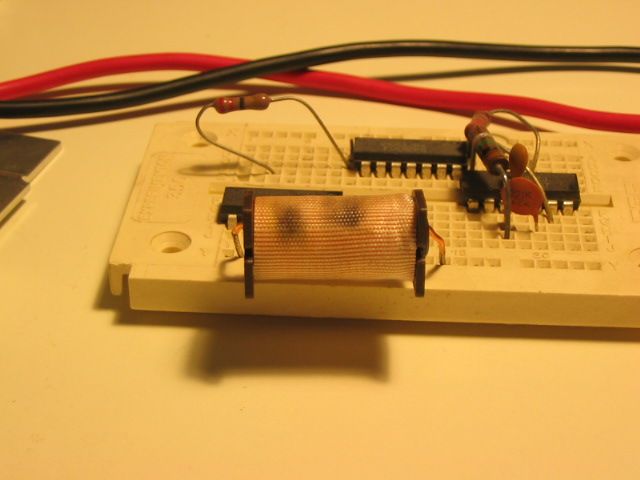I've been using X10 switches for nearly 30 yrs now. Most continue to work fine, but I've noticed over the years that the wall switch light units fail the most. I've saved several that have gone Tango Uniform. While all the tools were out for the Citation project, I thought I'd pull apart a few for a closer look.
The price of replacement modules has steadily risen and the last 'new' one I bought at Fry's was TU on arrival. The idea occured that I could cannibalize some plug-in lamp modules, which I seem to have a plethora of, to refit the wall switch modules.
The internals are rather simple and straight-forward and shared across the lamp modules and a few others that use TRIACs to enable dimming. The appliance modules use relays instead.
Here's the first clue:

See that black spot on the top, right edge of the long blue capacitor? Not a good sign.
Here's another clue:

Apparent burn marks on the side of a wire-wound inductor.
Note the color difference between these two 0.68uF caps. Guess which one overheated?

If you picked the left one, you're correct. It also measures 0uF, so it's Toes Up. It's companion (not shown), a 0.1uF is also scorched, but reads correctly. Also note the voltage rating: 250VAC.
The TRIAC used in these modules is a Q4010L4, rated for 10A. TRIAC operation is a bit involved to explain here, but it operates like an electronic switch that is also able to 'chop' the AC waveform, limiting the duty cycle and thus acting as a dimmer. These have a reputation for going TU when a flood/spot light the module is controlling suddenly burns out with a bright FLASH!
Incidently, the two 'apparent' scorch marks on the inductor pictured above, didn't indicate an open spot as it has continuity and when unwrapped and examined, appears OK.
I'll post more results as they develop.
The price of replacement modules has steadily risen and the last 'new' one I bought at Fry's was TU on arrival. The idea occured that I could cannibalize some plug-in lamp modules, which I seem to have a plethora of, to refit the wall switch modules.
The internals are rather simple and straight-forward and shared across the lamp modules and a few others that use TRIACs to enable dimming. The appliance modules use relays instead.
Here's the first clue:

See that black spot on the top, right edge of the long blue capacitor? Not a good sign.
Here's another clue:

Apparent burn marks on the side of a wire-wound inductor.
Note the color difference between these two 0.68uF caps. Guess which one overheated?

If you picked the left one, you're correct. It also measures 0uF, so it's Toes Up. It's companion (not shown), a 0.1uF is also scorched, but reads correctly. Also note the voltage rating: 250VAC.
The TRIAC used in these modules is a Q4010L4, rated for 10A. TRIAC operation is a bit involved to explain here, but it operates like an electronic switch that is also able to 'chop' the AC waveform, limiting the duty cycle and thus acting as a dimmer. These have a reputation for going TU when a flood/spot light the module is controlling suddenly burns out with a bright FLASH!
Incidently, the two 'apparent' scorch marks on the inductor pictured above, didn't indicate an open spot as it has continuity and when unwrapped and examined, appears OK.
I'll post more results as they develop.
